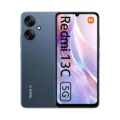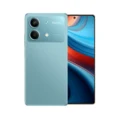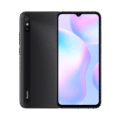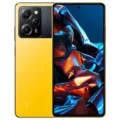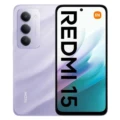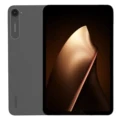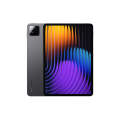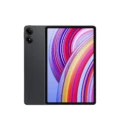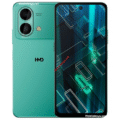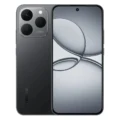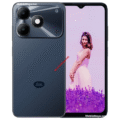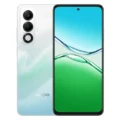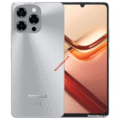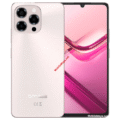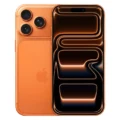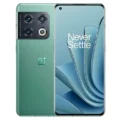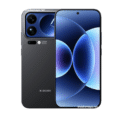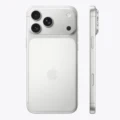Price List: Under Tk.5,000 | Tk.5001-10000 | Tk.10001-15000 | Tk.15001-20000 | Tk.20001-30000 | Tk.30001-40000 | More Mobiles
- Home
- All Mobile
- Xiaomi
- Xiaomi Pocophone F1
Xiaomi Pocophone F1
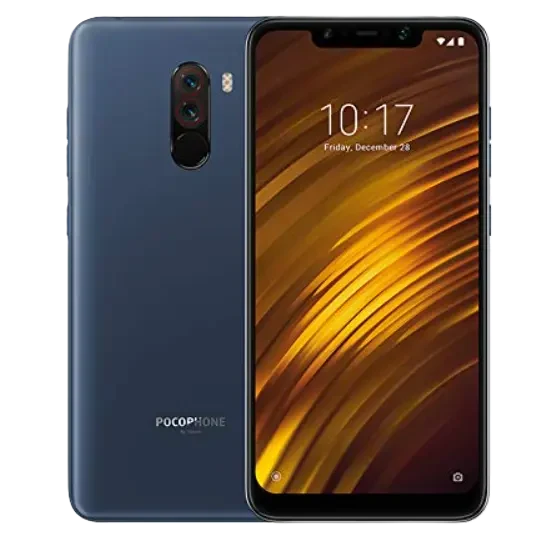

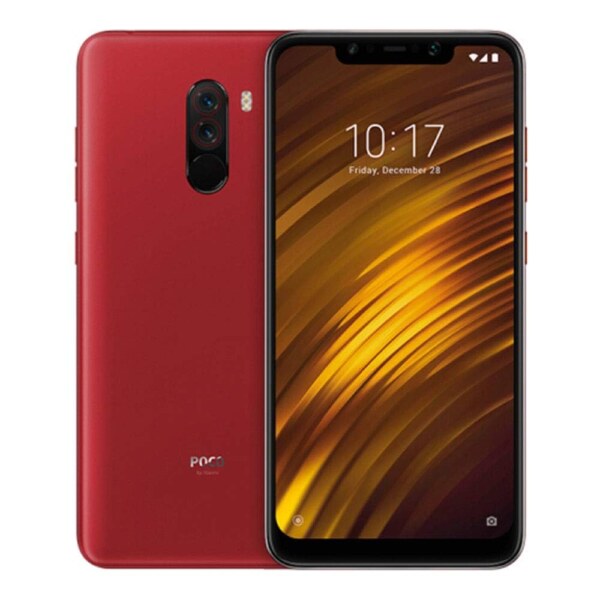
Specifications
Price in Bangladesh
| Official | 6GB 128GB ৳29,999 |
| Unofficial Unofficial prices and phones are available only non authorized shops. The device does not come with an official warranty in Bangladesh. | 6GB 64GB ৳20,000 / 6GB 128GB ৳22,500 |
General
| Device Type | Smartphone |
| Model | M1805E10A, POCO F1 |
| Announced | August, 2025 |
| Released | August, 2025 |
| Status | Available |
Hardware & Software
| Operating System OS => Every computer system run on a base software called Operating System (OS). Operating System controls all basic operations of the computer (such as smartphone, PDAs, tablet computers and other handheld devices). The Operating System allows the user to install and run third party applications (apps), apps are used to add new functionality to the device. | Android |
| OS Version | v8.0 |
| Chipset Chipset is a group of integrated circuits designed to perform one or a more dedicated functions, often with real time computing constraints, Popular smartphones are equipped with more advanced embedded chipsets that can do many different tasks depending on their programming. | Qualcomm SDM845 Snapdragon 845 (10 nm) |
| CPU CPU (Central Processing Unit) mostly known as processors, CPU processes instructions in order to carry out certain functions that make your device operate properly. Processors are often described as the brain of computers, smartphones and tablets, Smartphones and tablets rely on processors to carry out their every task, Processors are an incredibly important factor in selecting any type of computing device, including your smartphone. | Octa-core (4x2.8 GHz Kryo 385 Gold & 4x1.8 GHz Kryo 385 Silver) |
| GPU GPU (Graphics Processing Unit) is a single-chip processor designed to rapidly manipulate and alter memory to accelerate the creation of images in a frame buffer intended for output to a display, This includes things such as lighting effects, object transformations, and 3D motion. | Adreno 630 |
| RAM (Memory) RAM (Random Access Memory) is a type of computer memory that can be accessed randomly, any byte of memory can be accessed without touching the preceding bytes that allows information to be stored and accessed quickly from random locations. RAM is the most common type of memory found in computer systems, smartphones, tablets and other electronic devices. | 6 GB, 8 GB |
Design
| Dimensions | 155.5 x 75.3 x 8.8 mm (6.12 x 2.96 x 0.35 in) |
| Weight | 182 g (6.42 oz) |
| Colors |
Graphite Black, Steel Blue, Rosso Red, Armored Edition with Kevlar |
| Build Material | Glass front (Gorilla Glass), plastic back, plastic frame |
Display
| Display Type Display Technology => A number of display technologies and types used in mobile phones => TFT (Thin Film Transistor), IPS (In-Place Switching), OLED (Organic Light Emitting Diode), AMOLED (Active-Matrix Organic Light-Emitting Diode), Super AMOLED (an even advanced version of AMOLED), Resistive Touchscreen (Resistive touchscreens contain two layer of conductive material with a very small gap between them which acts as a resistance), Capacitive Touchsceen (Capacitive touchscreen technology consists of a layer of glass coated with a transparent conductor) | IPS LCD |
| Size | 6.18 inches, 96.2 cm2 (~82.2% screen-to-body ratio) |
| Resolution | 1080 x 2246 pixels, 18.7:9 ratio (~403 ppi density) |
| HDR 10 / HDR+ support |
Rear Camera
| Camera Setup | Dual |
| Main Camera | 12 MP, f/1.9, 1/2.55", 1.4µm, dual pixel PDAF |
| Second Camera | 5 MP, f/2.0, 1.12µm, depth sensor |
| OIS | |
| Video | 4K@30/60fps, 1080p@30fps (gyro-EIS), 1080p@240fps, 720p@960fps |
Front Camera
| Camera Setup | Single |
| Secondary |
20 MP, f/2.0, (wide), 1/3", 0.9µm |
| Video | 1080p@30fps |
Battery
| Battery Type Battery Type => Cell phones run on various kinds of batteries depending on the manufacturer, phone size or shape and features. There are basically four types of cell phone batteries => Lithium Polymer, Lithium Ion, Nickel Metal Hydride and Nickel Cadmium. | Li-Ion (Lithium Ion) |
| Placement | Non-removable |
| Capacity Battery Capacity is a measure (typically in Amp-hr) of the charge stored by the battery, and is determined by the mass of active material contained in the battery. The battery capacity represents the maximum amount of energy that can be extracted from the battery under certain conditions. | 4000 mAh |
Storage
| Storage Type | UFS 2.1 |
| Storage Capacity | 64 GB, 128 GB, 256 GB |
| USB OTG |
Network
| 2G Network |
GSM 850 / 900 / 1800 / 1900 |
| 3G Network |
HSDPA 850 / 900 / 1900 / 2100 |
| 4G Network |
1, 3, 5, 7, 8, 20, 38, 40, 41 |
| SIM SIM (Subscriber Identity Module) is a small card that contains mobile network subscriber's account information. This allows the phone using the card to attach to a mobile network. The SIM card is most commonly associated with GSM and UMTS mobile networks. Moving a SIM card from one phone to another allows a subscriber to switch mobile phones without having to contact their mobile network carrier. SIM cards can also be used by a phone to store limited amounts of data, such as phone numbers and text messages. | Standard SIM |
Data
| GPRS GPRS (General Packet Radio Service) is a packet oriented mobile data service on the 2G and 3G cellular communication system's global system for mobile communications (GSM), Generally, GPRS is used for the purpose of wireless data transfer, such as sharing pictures and videos or browsing the Internet via a mobile phone connection. | |
| EDGE EDGE (Enhanced Data GSM Environment) is a wireless network technology generally considered the next step in the 2G network offers data transfer rates up to four times faster than ordinary GSM networks, Generally, EDGE is used for the purpose of wireless data transfer, such as sharing pictures and videos or browsing the Internet via a mobile phone connection. | |
| Speed | HSPA 42.2/5.76 Mbps, LTE (4CA) Cat16 1024/150 Mbps |
| Web Browser Web Browser => a web browser is a software application used to locate, retrieve and display content on the World Wide Web, including Web pages, images, video and other files, The primary function of a web browser is to render HTML, the code used to design or markup webpages. | HTML5 |
Messaging
| SMS SMS (Short Messaging Service) is a text messaging service component of phone, Web, or mobile communication systems. It uses standardized communications protocols to allow mobile phone devices to exchange short text messages over the networks. | Yes |
| MMS MMS (Multimedia Messaging Service) is a standard way to send messages that include multimedia content (audio clips, video clips and images) to and from mobile phones over wireless networks using the WAP protocol. | |
| Email Email (Electronic Mail) is a system for receiving, sending, and storing electronic messages, Similar to a letter, email is text messages that may contain files, images, or other attachments sent via the internet to a recipient by using applications and software prograps. An email address is required to receive email, and that address is unique to the user. | Yes |
| IM IM (Instant Messaging) is an exchange of text messages through a software application, it enable you to create a kind of private chat room with another individual in order to communicate in real time over the Internet. | Yes |
Connectivity
| Bluetooth Bluetooth is a wireless communications technology for exchanging data between mobile phones, headsets, computers and other network devices over short distances without wires, Bluetooth technology was primarily designed to support simple wireless networking of personal consumer devices. | 5.0, A2DP, LE, aptX HD |
| Wi-fi Hotspot | |
| Infrared Infrared connectivity is an old wireless technology used to connect two electronic devices. It uses a beam of infrared light to transmit information and so requires direct line of sight and operates only at close range. | |
| USB | USB Type-C 2.0, OTG |
| GPS GPS The Global Positioning System is a satellite-based radio navigation system, GPS permits users to determine their position, velocity and the time 24 hours a day, in all weather, anywhere in the world, In order to locate your position, your device or GPS receiver must have a clear view of the sky. | GPS, GLONASS, BDS |
| NFC NFC (Near field communication) is a set of standards for smartphones and similar devices to establish peer-to-peer radio communications with each other by touching them together or bringing them into proximity, usually no more than a few inches. |
Media
| FM Radio | FM radio, recording |
| Loudspeaker | Yes, with stereo speakers |
| 3.5mm Jack | No |
Sensors & Security
| Fingerprint Sensor |
More
| Made By | China |
| SAR | 0.66 W/kg (head) 1.18 W/kg (body) |
| SAR EU | 0.54 W/kg (head) 1.58 W/kg (body) |
Performance Tests
| AnTuTu | 265314 (v7) |
| GeekBench | 265314 (v7) |
| GFXBench | 31fps (ES 3.1 onscreen) |
| Display | Contrast ratio: 1468:1 (nominal), 3.059 (sunlight) |
| Loudspeaker | Voice 72dB / Noise 74dB / Ring 86dB |
| Battery (old) | Endurance rating 94h |
PROS
- Powerful Snapdragon 845 processor
- Great value for performance
- Liquid cooling for thermal control
- High-res selfie camera
- Expandable storage
- Stereo speakers
CONS
- No 5G support
- Plastic back, less premium feel
- Older Android version
- No wireless charging
- Lacks official water resistance rating
Xiaomi Pocophone F1 Price in Bangladesh
The Xiaomi Pocophone F1 is available in Bangladesh with both official and unofficial pricing depending on the variant. The official 6GB+128GB model is priced at ৳29,999, while the unofficial units are more budget-friendly, starting from ৳20,000.
The Pocophone F1 made waves during its launch for offering flagship-level performance at a mid-range price. With its Snapdragon 845 processor, liquid cooling technology, large 4000mAh battery, and a 20MP front camera, it remains a strong contender even years after release. Though launched in 2018, it continues to be favored by power users, gamers, and those looking for a performance-driven device without breaking the bank.
Price & Variants
| RAM & Storage | Price (BDT) | Status |
|---|---|---|
| 6GB + 64GB | ৳20,000 | Unofficial |
| 6GB + 128GB | ৳22,500 | Unofficial |
| 6GB + 128GB | ৳29,999 | Official |
Xiaomi Pocophone F1 Specifications
The Xiaomi Pocophone F1 is a performance-focused smartphone powered by the Snapdragon 845 chipset. Known for its smooth gaming performance and AI-driven dual cameras, this device packs flagship-grade internals at a mid-range price point.
| Feature | Details |
|---|---|
| Model Name | Xiaomi Pocophone F1 (M1805E10A) |
| Release Date | August 2018 |
| Market Availability | Available |
| Official Price | ৳29,999 (6GB+128GB) |
| RAM & Storage | 6GB/8GB RAM, 64GB/128GB/256GB UFS 2.1 |
Display and Design
The Pocophone F1 features a 6.18-inch IPS LCD display with a resolution of 1080 x 2246 pixels and an 18.7:9 aspect ratio. With a pixel density of ~403 ppi, it offers crisp visuals and good brightness levels, even under sunlight. The screen is protected by Corning Gorilla Glass, although not the latest version.
The phone sports a plastic back and plastic frame, making it less premium than glass or metal competitors, but more durable in daily use. The design is practical, and it comes in several finishes, including Graphite Black, Steel Blue, Rosso Red, and an Armored Edition with Kevlar. At 182g, it’s reasonably lightweight and well-balanced in hand.
Performance and Processor
Under the hood, the Pocophone F1 is powered by the Qualcomm Snapdragon 845 (10nm) processor paired with the Adreno 630 GPU. The octa-core CPU features four high-performance Kryo 385 Gold cores clocked at 2.8GHz and four efficiency Kryo 385 Silver cores at 1.8GHz.
This setup ensures smooth performance across demanding tasks like gaming, multitasking, and video editing. The liquid cooling system helps maintain performance under extended load. It comes in 6GB and 8GB RAM options, with UFS 2.1 storage up to 256GB. Yes, it also supports microSD expansion via the hybrid SIM slot.
Camera and Video
The Pocophone F1 offers a dual rear camera setup:
- 12MP main sensor with dual pixel autofocus
- 5MP depth sensor for portrait shots
It supports 4K video recording at 30/60fps, 1080p at up to 240fps, and even super slow motion at 720p@960fps. Electronic image stabilization (EIS) ensures stable footage in most scenarios.
On the front, you’ll find a 20MP selfie shooter with f/2.0 aperture, capable of 1080p video recording. The front camera also supports AI scene detection and beautification, making it a solid choice for selfie lovers.
Battery and Charging
Packed with a 4000mAh battery, the Pocophone F1 delivers solid endurance, earning a 94-hour endurance rating in testing. It supports Quick Charge 3.0, and while it’s not the fastest charger by today’s standards, it still holds its own.
The battery easily lasts a full day of intensive use, and even longer for casual users. Sadly, there’s no wireless charging, but USB-C fast charging is present.
Connectivity and 5G Support
The Pocophone F1 supports dual SIM (Nano-SIM, hybrid slot) and covers a wide range of 4G LTE bands, making it suitable for most carriers in Bangladesh.
Other connectivity features include:
- Bluetooth 5.0 with aptX HD
- Dual-band Wi-Fi with hotspot support
- USB Type-C 2.0 with OTG
- GPS with GLONASS and BDS
- FM Radio with recording
Note: This phone does not support 5G.
Additional Features
- Fingerprint Sensor: Rear-mounted
- Face Unlock: IR-based, fast and secure
- Operating System: Android 8.1 (upgradable)
- UI: MIUI for POCO (customized MIUI skin)
- Stereo Speakers: Loud and clear audio
- 3.5mm Jack: Present
- Sensors: Accelerometer, gyro, proximity, compass
Reason to Buy
- Flagship Snapdragon 845 processor at a mid-range price
- Liquid cooling technology for consistent performance
- Large 4000mAh battery with Quick Charge 3.0
- High-resolution 20MP front camera
- UFS 2.1 storage for fast read/write speeds
- Stereo speakers for immersive sound
- Durable build and IR Face Unlock
Verdict
The Xiaomi Pocophone F1 still holds its ground as one of the best value-for-money smartphones even years after its release. It was a disruptive flagship killer, offering top-tier specs like the Snapdragon 845, dual cameras, and large battery at a price most mid-range devices couldn’t match.
Ideal for gamers, power users, and tech enthusiasts, the Pocophone F1 delivers excellent performance, long battery life, and a no-nonsense Android experience. While it lacks premium design materials and 5G, the trade-offs are more than acceptable considering the price.
FAQ
Q. Does the Pocophone F1 support 5G?
No, it supports up to 4G LTE networks only.
Q. Is the storage expandable?
Yes, via microSD card (uses SIM 2 slot).
Q. Is the Pocophone F1 good for gaming?
Absolutely. The Snapdragon 845 and liquid cooling make it ideal for gaming.
Q. Does it have a headphone jack?
Yes, it features a 3.5mm headphone jack.
Q. What Android version does it run?
It was launched with Android 8.1 and is upgradeable via MIUI for POCO.
Alternatives to Xiaomi Pocophone F1
If you’re considering more recent phones, here are some strong alternatives:
- POCO X5 Pro 5G – Snapdragon 778G, AMOLED display, 5G support
- Redmi Note 13 Pro – 200MP camera, fast charging, stylish design
- realme Narzo 70 Pro – AMOLED display, Dimensity 7050, affordable
- Samsung Galaxy A34 5G – Great display, long software support
- Infinix Zero 30 5G – 4K selfie video, solid performance
User Reviews
Disclaimer Note
We do not guarantee that the information of this page is 100% accurate and up to date.


